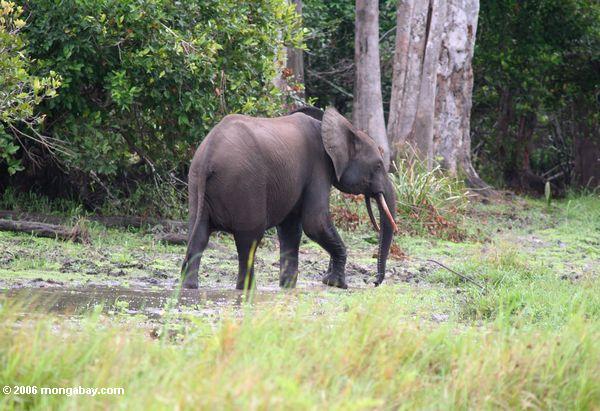A forest elephant, which is considered by some to be a distinct species of elephant in Africa, in Gabon. Both forest elephants and savannah elephants are increasingly killed for their tusks. The Wildlife Conservation Society (WCS) estimates that 30,000 elephants will be killed this year along for the black market trade. Photo by: Rhett A. Butler.
Today has been dubbed the first ever global Wildlife Conservation Day. To honor it, a coalition of conservation groups—including WWF and Wildlife Conservation Society (WCS)—are working to raise awareness of illegal wildlife trafficking. Poaching for traditional medicine, bushmeat, and other products has put innumerable species at risk, including tigers, rhinos, sharks, and elephants.
“Wildlife trafficking has become more organized, more lucrative, more widespread, and more dangerous than ever before […] Wildlife trafficking threatens security and the rule of law, undermines conservation efforts, robs local communities of their economic base, and contributes to the emergence and spread of disease,” U.S. Secretary of State, Hillary Clinton, said at a recent event.
WCS estimates that this year 30,000 African elephants will be killed for their ivory, over 25 million sharks will be caught for their fins, and nearly 500 black rhinos—listed as Critically Endangered—will be shot down in South Africa alone for their horns. The illegal trade also has a vast human toll: both wildlife rangers and poachers are often killed in shootouts.
Demand is in increasing in countries like China and Vietnam for products made from wildlife, such as powdered rhino horn, shark find soup, tiger blood, bear bile, and ivory.
The NGOs are asking that the public take a pledge to do their part to put an end to wildlife trafficking.
Related articles
Hong Kong authorities intercept shipment with 200 dead elephants’ worth of ivory
(11/18/2012) Officials in Hong Kong have made a second major ivory bust in less than a month, reports the Associated Press.
Conservationists turn camera traps on tiger poachers
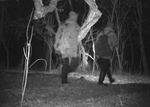
(11/12/2012) Remote camera traps, which take photos or video when a sensor is triggered, have been increasingly used to document rare and shy wildlife, but now conservationists are taking the technology one step further: detecting poachers. Already, camera traps set up for wildlife have captured images of park trespassers and poachers worldwide, but for the first time conservationists are setting camera traps with the specific goal of tracking illegal activity.
‘The ivory trade is like drug trafficking’ (warning graphic images)

(11/05/2012) For the past five years, Spanish biologist Luis Arranz has been the director of Garamba National Park, in the Democratic Republic of Congo (DRC). Arranz and a team of nearly 240 people, 140 guards among them, work to protect a vast area of about 5,000 square kilometers (1,930 square miles) of virgin forest, home to a population of more than 2.300 elephants that are facing a new and more powerful enemy. The guards are encountering not only bigger groups of poachers, but with ever more sophisticated weapons. According to Arranz, armed groups such as the Lord’s Resistance Army from Uganda are now killing elephants for their ivory.
Leopard poaching is a bigger problem in India than previously believed
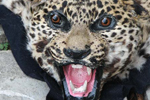
(10/31/2012) A recent study conducted by wildlife trade monitoring group TRAFFIC uncovered unnerving statistics about the illegal trade of leopards (Panthera pardus) in India: at least four leopards have been poached every week for the past decade in the country. The study, entitled Illuminating the Blind Spot: A study on illegal trade in Leopard parts in India, highlights the severity of leopard poaching from 2001 to 2010, despite preventative measures established in 1972 by the Wildlife Protection Act (WLPA) that prohibit the sale of leopard parts in India.
Indonesia remains epicenter for illegal wildlife trade in reptiles and amphibians
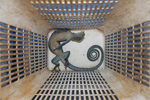
(10/24/2012) Demand for exotic pets is driving the illegal harvest and trade of herpetofauna (reptiles and amphibians) in Indonesian New Guinea, according to a recent study published in the journal Biodiversity and Conservation. Between September 2010 and April 2011, Daniel Natusch and Jessica Lyons of the University of New South Wales surveyed traders of amphibians and reptiles in the Indonesian provinces of Maluku, West Papua and Papua.
Authorities confiscate 600 dead elephants’ worth of ivory in Hong Kong
(10/22/2012) Hong Kong authorities have confiscated two massive shipments of elephant tusks, totaling 1,209 tusks, stemming from Kenya and Tanzania. Representing over 600 poached elephants, the shipments are estimated to be worth $3.4 million on the black market. African elephants are being decimated for their tusks in recent years with heavily-armed and well-connected poachers—backed by criminal syndicates—killing off whole herds in some cases.
South Africa hits another new record in rhino killings
(10/18/2012) Four hundred and fifty-five rhinos have been killed by poachers in South Africa since the beginning of the year. The number surpasses the record set last year (448) and proves that national efforts to stem poaching have not yet made a dent in actual killings. The mass killing has been spurred on by high demand for powdered rhino horn in Vietnam and China. A traditional curative in Asia, rhino horn has no medicinal properties according to scientists.
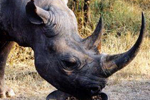
(10/15/2012) 23,680 = the estimated number of wild rhinoceroses in South Africa. 35,000,000 = the number of American dollars generated by rhino hunting in South Africa. 97% = the percentage increase in illegally-hunted rhinos in 2011 from the national average in 1990. 30,000 = the number of pounds of rhino horns confiscated from poachers since 2010. 65 = the number of horns that have been stolen in South Africa from public display. 430…the number of rhinos killed this year, and counting…
